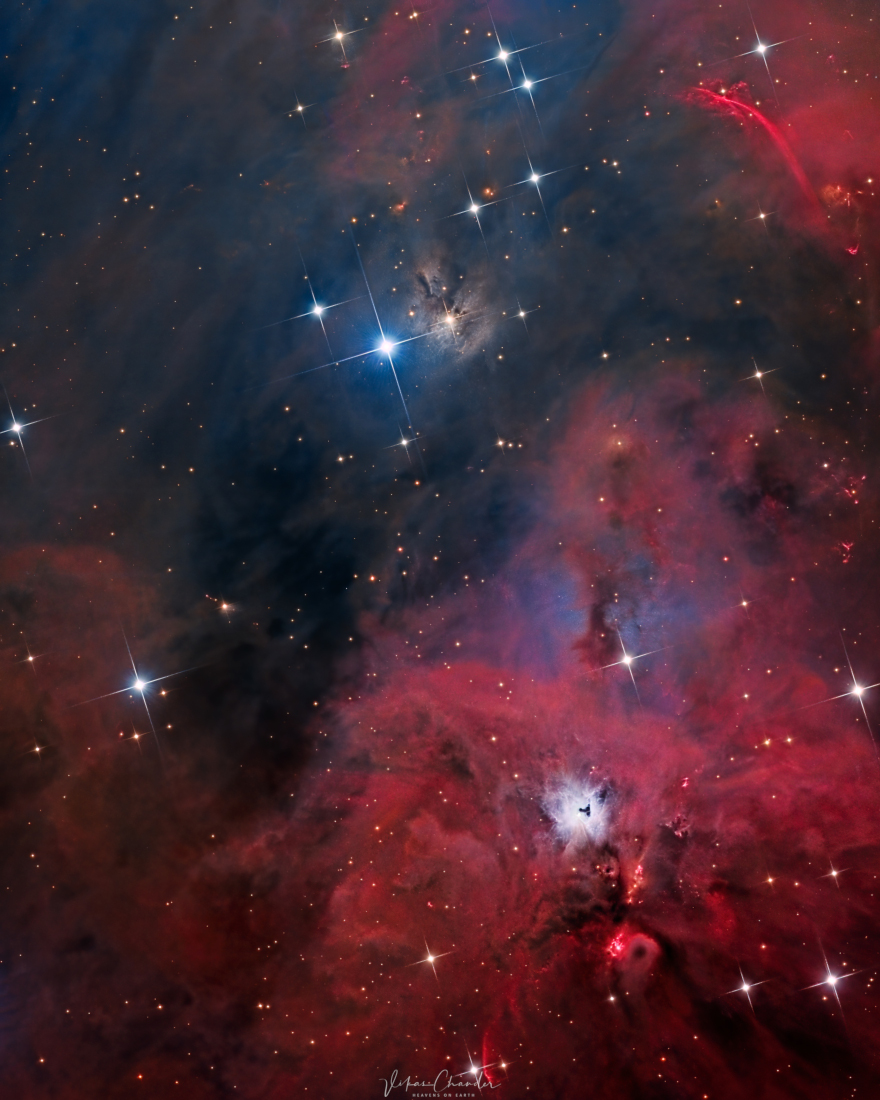猎户座星云之南
2022年1月27日
South of Orion
Image Credit & Copyright: Vikas Chander
Explanation: South of the large star-forming region known as the Orion Nebula, lies bright blue reflection nebula NGC 1999. At the edge of the Orion molecular cloud complex some 1,500 light-years distant, NGC 1999’s illumination is provided by the embedded variable star V380 Orionis. The nebula is marked with a dark sideways T-shape at center right in this telescopic vista that spans about two full moons on the sky. Its dark shape was once assumed to be an obscuring dust cloud seen in silhouette. But infrared data suggest the shape is likely a hole blown through the nebula itself by energetic young stars. In fact, this region abounds with energetic young stars producing jets and outflows with luminous shock waves. Cataloged as Herbig-Haro (HH) objects, named for astronomers George Herbig and Guillermo Haro, the shocks have intense reddish hues. HH1 and HH2 are just below and right of NGC 1999. HH222, also known as the Waterfall nebula, looks like a red gash near top right in the frame. To create the shocks stellar jets push through the surrounding material at speeds of hundreds of kilometers per second.
Tomorrow’s picture: the western eastern sea
猎户座星云之南
影像提供与版权: Vikas Chander
说明: 在名为猎户座星云的大恒星区之南,有编录号为NGC 1999的泛蓝反射星云。NGC 1999位在离我们约1,500光年的猎户座分子云复合体之边缘,受到其内部的变星猎户V380星之照亮。在这片涵盖天空约2个满月宽度的望远镜视野里,这个星云位在中右方,以侧向的黝黑T形为记。这个黝黑的标记,过去一度认为是不透光尘埃云的剪影。不过红外光的观测数据显示,它可能是活跃年轻恒星在星云内吹出的缺口。而在这个区域里,的确到处都是活耀的年轻恒星,以及它们所发出的喷流与外泛物质流所造成明亮的激震波。这些发出明亮泛红辉光的激震波前,因天文学家天文学家乔治·赫比格与吉列尔莫·哈罗而得名,故通称为赫比格-哈罗天体;其中包括出现在NGC 1999下方和右方的HH1与HH2。此外在影像的右上角,还可见到有瀑布星云之称的HH222。这些造成激震的恒星喷流,以每秒数百公里的高速穿过周围的云气物质。
明日的图片: the western eastern sea

